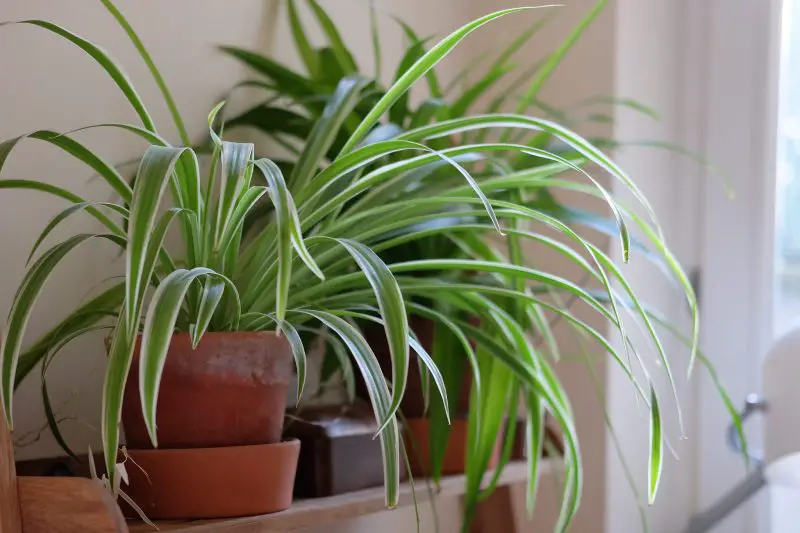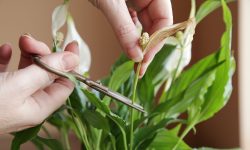Spider plants, scientifically known as Chlorophytum comosum, are among the most beloved and beginner-friendly houseplants across the world. Their vibrant arching leaves, coupled with their ability to produce baby “spiderettes,” make them both visually appealing and highly rewarding. While these plants are known for being relatively low-maintenance, one of the most crucial aspects of their care revolves around watering. Knowing how often to water a spider plant can mean the difference between limp, browning leaves and a thriving, lush green display.
Watering may seem simple, but it requires a deeper understanding of the spider plant’s natural needs, environmental factors, and signs of stress. The goal is to provide just the right amount of hydration to support healthy foliage growth without risking root rot or dehydration. This guide will walk you through all the key considerations when it comes to watering spider plants and maintaining ideal conditions for lush, vigorous growth.
Understanding the Watering Needs of Spider Plants

Spider plants hail from tropical and subtropical regions of southern Africa, where they typically grow in partially shaded areas with moderate rainfall. This origin gives them a preference for evenly moist, well-draining soil and high humidity. However, in modern indoor environments, spider plants must rely entirely on the care provided by their owners.
What sets spider plants apart from many other houseplants is their thick, tuberous roots. These roots act as water reservoirs, allowing the plant to tolerate brief periods of drought. At the same time, these same roots are vulnerable to overwatering, which can easily lead to root rot. As a result, spider plants thrive best when watered consistently but only when truly needed.
The frequency of watering depends on multiple factors such as temperature, humidity, soil type, light exposure, and the time of year. Instead of following a strict schedule, it’s important to observe your plant and feel the soil to determine the right moment for watering. This intuitive, observation-based approach ensures that your spider plant receives water tailored to its environment.
Evaluating Soil Moisture Before Watering
One of the best ways to determine when to water a spider plant is by checking the soil moisture. This can be done by inserting your finger about an inch into the soil. If the top inch feels dry, it’s usually a good time to water. If it still feels moist, it’s better to wait another day or two.
This method of checking allows you to avoid guesswork and prevents overwatering, which is one of the most common mistakes made with spider plants. Because spider plants prefer their soil to dry out slightly between waterings, keeping the soil constantly wet can suffocate the roots and promote fungal issues. On the other hand, letting the soil stay dry for too long can cause leaf tips to brown or become crispy.
The importance of touch-testing the soil cannot be overstated. Even if your plant looks fine on the surface, the real conditions at the root level determine its health. Dry soil at the surface does not always mean dryness deeper in the pot. That’s why it’s essential to check more than just the top layer when assessing watering needs.
Seasonal Changes and Watering Adjustments
Spider plants experience different water needs depending on the season. During the spring and summer months, when the plant is actively growing, it tends to use more water. The combination of increased light exposure and higher temperatures leads to faster evaporation and increased transpiration, both of which require more frequent watering.
In contrast, during fall and winter, spider plants typically enter a period of slower growth or partial dormancy. With less light and cooler temperatures, their water requirements decrease. Continuing to water as frequently during this time can lead to soggy soil and damage the roots. It’s wise to reduce watering frequency during these months, allowing more time between waterings to reflect the plant’s natural rhythm.
Making seasonal adjustments to your watering routine helps align your care with the plant’s internal cycles. Monitoring environmental changes and responding accordingly promotes healthier growth and minimizes the risk of overwatering-related problems during the plant’s resting periods.
The Role of Light and Temperature in Watering Frequency
The amount of light your spider plant receives plays a significant role in how quickly the soil dries out. Plants placed in bright, indirect light often use water more rapidly than those in low-light conditions. A spider plant near a sunny window may require watering every 5 to 7 days during summer, while one placed in a shaded room could go a week or more between waterings.
Temperature also impacts watering needs. Warmer temperatures increase evaporation and metabolic activity in plants, accelerating water use. In warmer climates or homes with central heating, spider plants may dry out faster, requiring more attention. Conversely, cooler environments slow down these processes, extending the time needed between waterings.
Understanding the relationship between light, temperature, and watering helps you fine-tune your care routine. It also emphasizes the importance of adapting to the plant’s surroundings rather than following a rigid watering schedule.
Recognizing Signs of Underwatering and Overwatering
Observing your spider plant closely will help you catch signs of water-related stress before it becomes a serious problem. Underwatering typically results in limp, wilted leaves and dry soil. The tips of the leaves may turn brown or crispy due to prolonged dryness. In severe cases, the leaves may curl or become brittle, and growth will slow noticeably.
Overwatering, on the other hand, often manifests as yellowing leaves, soft or mushy roots, and a persistent musty smell coming from the soil. If left unaddressed, overwatering can lead to root rot, which is one of the most dangerous conditions for a spider plant. You may also notice brown spots appearing along the edges of leaves as the roots begin to fail.
Catching these symptoms early allows you to make quick corrections. For underwatering, simply resume regular watering and monitor the plant’s response. For overwatering, it’s often necessary to repot the plant in fresh soil and inspect the roots for damage. Identifying and addressing issues based on visual cues is a core part of successful spider plant care.
Choosing the Right Pot and Soil for Proper Drainage
To maintain healthy hydration, it’s essential to grow your spider plant in the right type of container and soil. The pot should always have drainage holes to allow excess water to escape freely. Without proper drainage, water can accumulate at the bottom of the pot, creating a soggy environment that promotes root rot.
As for soil, spider plants prefer a light, well-draining potting mix. A mixture formulated for houseplants usually works well, especially if it contains peat moss, perlite, or coarse sand. These components help retain the right amount of moisture while allowing air to circulate around the roots.
The combination of a breathable container and suitable soil creates an environment that supports even moisture retention without the risk of waterlogging. This balance is crucial for encouraging strong root growth and preventing both under- and overwatering.
Using Water Quality to Promote Healthier Leaves
The type of water you use can also affect your spider plant’s health and appearance. Tap water, especially if it contains chlorine, fluoride, or other chemicals, may contribute to brown leaf tips. These additives are not always visible, but they can accumulate in the soil over time and cause stress to the plant.
Filtered or distilled water is often a safer choice for spider plants, especially in areas with hard water. If filtered water isn’t available, leaving tap water out overnight before using it can help dissipate some of the chlorine. Rainwater is another excellent option, as it’s naturally soft and free from additives.
Using clean, chemical-free water supports better nutrient absorption and helps prevent damage to the roots and foliage. Over time, this leads to greener, more vibrant leaves and an overall healthier appearance.
Encouraging Lush Growth Through Consistency
Achieving lush growth in a spider plant is not only about how often you water, but how consistently you care for it. Spider plants thrive on routine and stability. Sudden shifts in watering habits, temperature, or light can cause stress and reduce the fullness of the foliage.
Sticking to a predictable watering routine based on your plant’s actual needs ensures steady growth. Keeping a journal or using reminders can help you track watering dates and monitor your plant’s response over time. Consistency allows the plant to develop strong roots and produce healthy leaves, setting the stage for vibrant growth.
Providing consistent care also reduces the likelihood of extreme drying or over-saturation, both of which can interrupt the plant’s development. A stable environment nurtures long-lasting, lush beauty.
How Humidity Affects Watering Needs
Humidity plays a critical role in how quickly a spider plant loses moisture. In high-humidity environments, the plant’s leaves lose less water through transpiration, which means the soil remains moist for longer periods. Conversely, in dry air—such as during winter months or in air-conditioned spaces—moisture evaporates more quickly, increasing the plant’s need for water.
Spider plants prefer moderate humidity and may suffer from brown tips in extremely dry conditions. Boosting indoor humidity can be achieved by placing the pot on a tray of wet pebbles, using a humidifier, or clustering plants together. These methods help reduce how often you need to water by retaining more moisture in the surrounding air.
Monitoring humidity and adjusting your watering schedule accordingly helps maintain the balance needed for lush foliage without overwatering. It’s an often-overlooked factor that can significantly influence watering frequency and plant health.
Caring for Spiderettes and Newly Propagated Plants
Spider plants frequently produce small offshoots or “spiderettes,” which can be rooted and grown into new plants. These younger plants have slightly different watering needs, especially during the initial stages of growth. Newly propagated spiderettes require slightly more frequent but lighter watering until their roots are well-established.
Keeping the soil lightly moist and providing bright, indirect light encourages strong root development. Once the roots are mature and the plant is well-settled in its pot, you can gradually transition to the same watering routine used for adult spider plants.
Understanding how propagation affects watering helps you care for both mature plants and their offspring, leading to an ever-expanding collection of lush, healthy greenery.
Long-Term Success and Troubleshooting Watering Habits
Over time, every plant owner learns that plant care is more of a relationship than a formula. The key to long-term success with spider plants lies in observing, adjusting, and responding to the plant’s cues. Each plant is a little different, and even two spider plants in the same room may have slightly different watering needs based on their pots, size, or placement.
Troubleshooting common problems like brown tips, drooping leaves, or slow growth often begins with re-evaluating your watering routine. Make sure you’re checking the soil regularly, using the right type of water, and considering external factors like light and humidity. Being proactive and responsive ensures you’ll stay ahead of issues and keep your spider plant thriving.
Establishing a personalized care routine based on observation and experience will give you the best results. The longer you care for your spider plant, the more in tune you’ll become with its unique rhythm and preferences.
Frequently Asked Questions About How Often Should You Water a Spider Plant
How often should I water a spider plant indoors?
Indoors, spider plants generally need watering once every 5 to 10 days. Always check the top inch of soil first and water only when it feels dry. Frequency may vary based on light, temperature, and humidity.
Can I water my spider plant on a set schedule?
While a schedule can be helpful, spider plants respond better to watering based on soil moisture. Checking the soil regularly is more effective than relying on a fixed routine.
What happens if I overwater my spider plant?
Overwatering can cause yellowing leaves, soft stems, and root rot. Always use well-draining soil and a pot with drainage holes to prevent excess moisture from accumulating.
Why are the leaf tips of my spider plant turning brown?
Brown leaf tips often indicate inconsistent watering or the use of tap water with chemicals like chlorine or fluoride. Switching to filtered water and adjusting humidity can help reduce this issue.
Should I water my spider plant more often in summer?
Yes, during summer spider plants tend to use more water due to higher temperatures and light levels. Monitor soil moisture more frequently during warmer months.
Conclusion
Knowing how often to water a spider plant is essential for keeping it lush, healthy, and vibrant. By observing the soil, adjusting to seasonal and environmental changes, and responding to the plant’s natural signals, you can develop a watering routine that promotes strong growth all year round. With just a little care and consistency, your spider plant will reward you with fresh green foliage and graceful cascading leaves.






